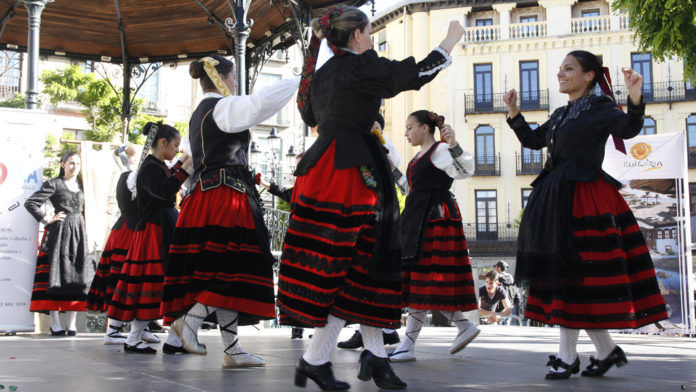That Spain is one of the world most popular destinations for tourism is not a secret. Before the pandemic, in 2019, Spain received 83,7 million visitors yearly. Many of them, however, did not enjoy Spain in a “Spanish way”. Ibiza, Barcelona or Madrid are well-known international holiday destinations, but many times culture and history are blurred in tight schedules and cultural globalization. Every corner of Spain has endemic features to discover. In this post, we will focus on a particular area, Castile, and its folklore and traditional dances. Ready to enjoy Spain in a slow way?
What is special about Castile?
During the XVth century, most of the different territories that conformed Spain nowadays came together thanks to marriage between Ferdinand of Aragon and Isabella of Castile. The region of Castilla was then the center of Spanish monarchy. Cities like Valladolid were, at this time, the core of Spanish cultural development. Catholicism, Islam and Judaism coexisted in this territory for a long period, making Castilian folklore one of the richest in Spain.
La jota: the most extended dance in Spain

Traditional traje charro from Salamanca in Spain
The most extended dance in Spain is the ‘jota’. It is a traditional dance popular not only in Castile, but also in Aragon, Navarra, La Rioja, Asturias… In every region, this dance has its particular variation.
In Castile, this dance is accompanied by guitars, ‘dulzainas’, tabors, and castanets that play folk songs. Castanets are widely used in Spain, being part of other very popular dances such as sevillanas or flamenco in Andalusia. However, dulzainas, which are wind instruments, are endemic to Castile. Their characteristic sounds make jotas castellanas unique.
Jota dancers use colorful and embroidered traditional dresses, which vary all over the the region. Some of them later influenced American costumes during the colonialism. One clear example is the Castilian traje charro from Salamanca, which inspired the Mexican traje charro. One particular characteristic of all these costumes is the use of a black cropped jacket or vest in men and colorful skirts with black stripes in women.
La rueda: the oldest choreographic formation
The ‘wheel dance’ is the oldest Spanish choreographic formation ever known. The dancers move a two different circles, while rotating. The inner circle is for women, and the outer is composed by men which look for their couple while dancing. All of the dancers follow the same moves, making this particular dance very visual. The steps vary in every region or town. For example, in Salamanca, the danza de la rosca is the most popular, while in Zamora is the bolero de Algodre. In Segovia, it is traditional to dance jota de las piñas or baile de las cintas.
In Valladolid, the ‘baile del Cántaro’, or jug dance, is the most characteristic. It represents a romantic conquest and it is based on a traditional everyday routine: while women went to the fountains with their jugs, men will flutter around them to get their attention.
Were you familiar with these dances? Have you ever enjoyed the beautiful Castilian folklore? If you want to know more, leave us a comment!


